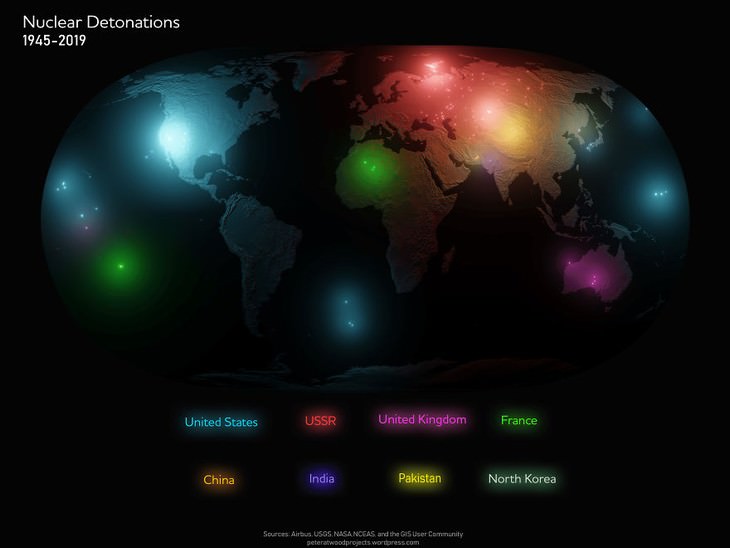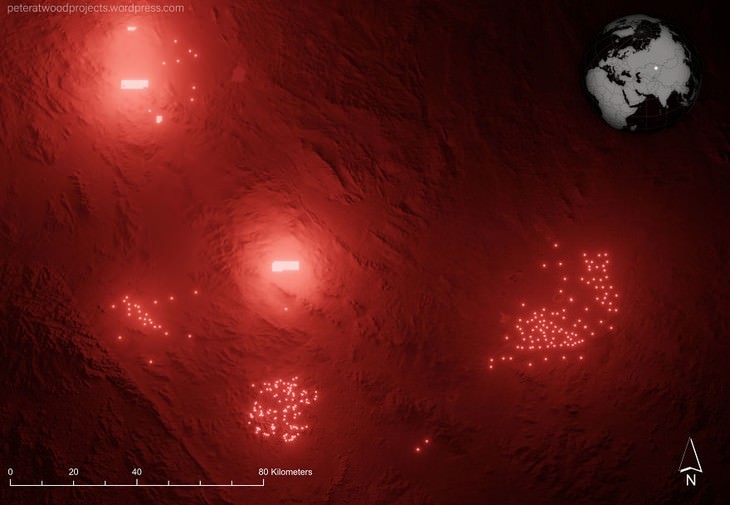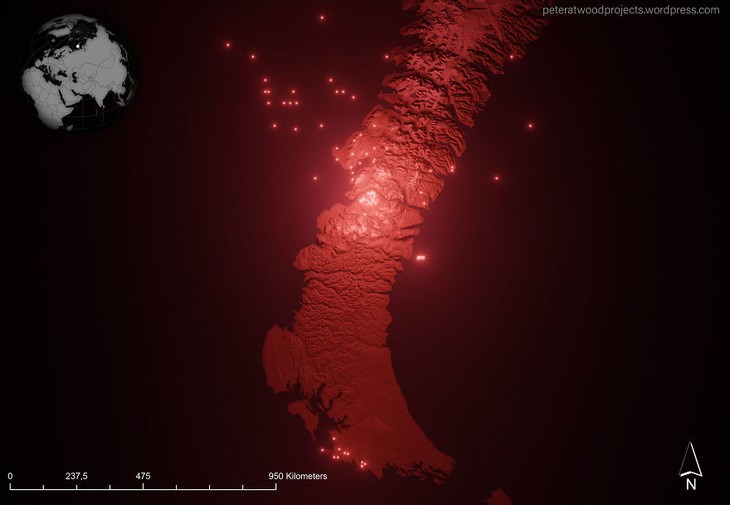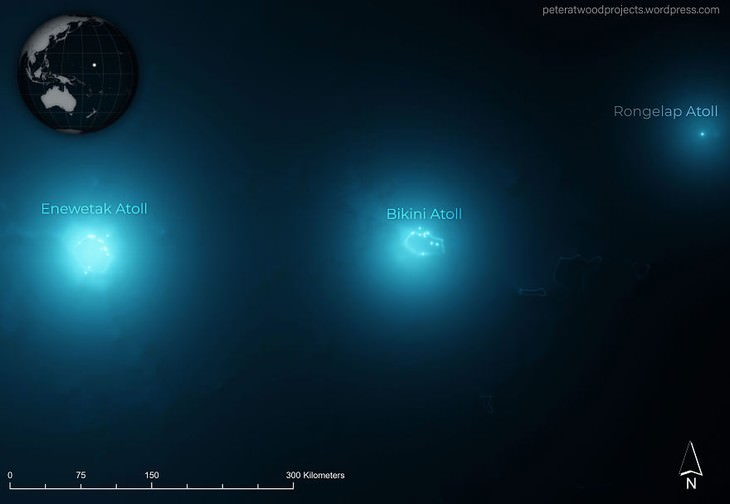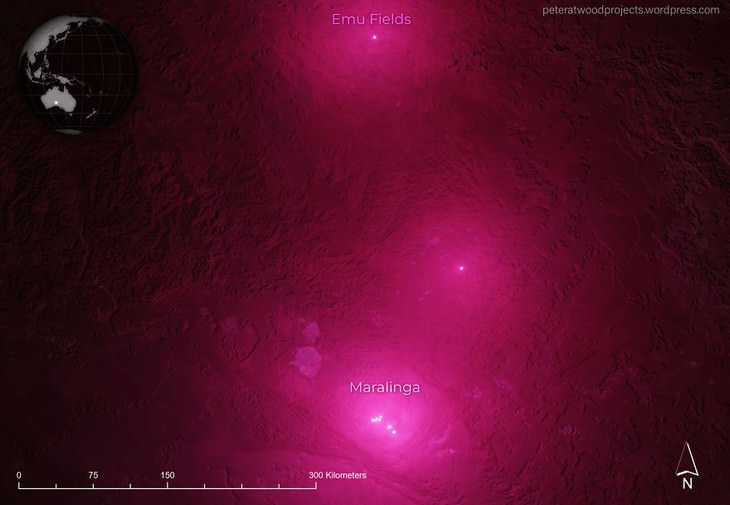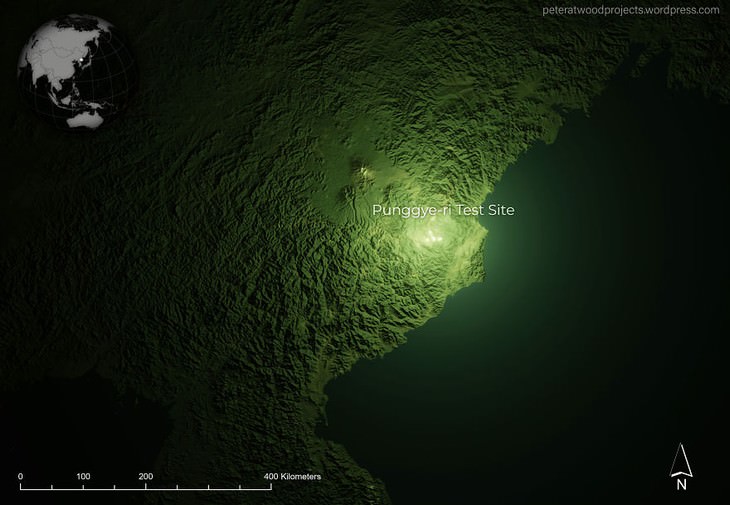The Global Map of All Nuclear Explosions Conducted From 1945 to 2019
The map above shows all the nuclear explosions carried out since 1945 on a global scale. Each point of color in the map signifies an explosion and is color-coordinated with a specific country that conducted it. On a global scale, the only continents where no nuclear explosions had occurred were South America and Antarctica.
The USSR
The Soviet Union was one of the two leading countries that conducted nuclear experiments, the second one being the United States. These experiments were conducted on 2 major sites: the Semipalatinsk Test Site in modern-day Kazakhstan and the Novaya Zemlya site in Russia.
Official data reports mention a total of 715 tests and 13 test failures involving 969 devices being conducted in the USSR between 1949 and 1991.
Above, you can see the map of the Semipalatinsk site, the first nuclear site in the USSR located in the Kazakh steppes that accepted 456 tests. With Kazakhstan having become independent in 1991, the venue was transformed into a site for scientific observations exploring the long-term environmental effects of nuclear exposure.
As for the Novaya Zemlya venue located in the Arctic (see image below), 224 tests, only half the number compared to Semipalatinsk, occurred there. However, the site accepted the largest thermonuclear weapon in the world in 1961, the Tsar Bomba that had a yield of 50 megatons. For comparison, the Fat Man dropped on Hiroshima was over 2,000 times less powerful than the Tsar Bomba.
The United States

As part of the nuclear arms race, the United States had conducted 1.054 tests, including some that were carried out in the water and in space between 1945 and 1992. As mentioned previously, the first ever atomic weapon, the Trinity, was tested in the New Mexico desert as part of the Manhattan Project, but the largest nuclear testing venue in the United States is located in the Nevada desert, only 80 mi (130 km) away from Las Vegas.
A total of 928 tests were conducted there between 1951 and 1992, making it the place on the planet that suffered the greatest number of nuclear explosions to date. Not all nuclear tests conducted by the US took place there, however, as some particularly large ones would just be too dangerous.
So, instead, these were done on the Marshall Islands in the South Pacific, an area that would be called the Pacific Proving Ground. 106 nuclear tests were conducted across numerous island chains there, including the test of Castle Bravo, the largest American nuclear bomb that had a yield of 15 megatons in 1954.
France
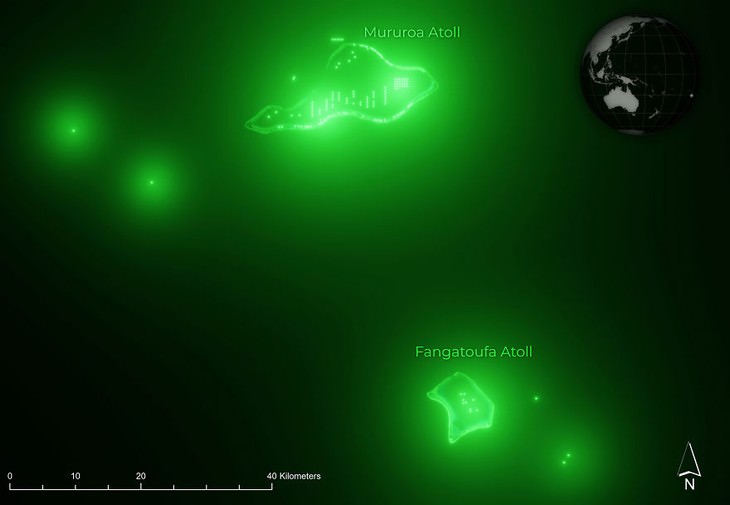
The third country in the world that conducted the largest number of nuclear experiments between 1960 and 1996 was France, but it didn’t do it in Europe. Instead, the French used its colonies, such as French Polynesia in the South Pacific and Algeria in North Africa to test its 217 nuclear devices.
The United Kingdom
Like France, the United Kingdom conducted its nuclear tests beyond its borders, with a total of 24 tests having been conducted at the Nevada Test Site in collaboration with the United States, and another 21 carried out independently in Australia. The UK was the third country to develop nuclear weapons after the US and the USSR.
The Australian tests were conducted in remote places like Maralinga in South Australia, Kiritimati in the Pacific and others between the years 1952 and 1957.
India and Pakistan

Areas adjacent to the border between India and Pakistan are considered some of the most dangerous and polluted nuclear sites, partly because both are quite densely populated. Both India and Pakistan have conducted 6 nuclear tests each during the 1990s, but these tests have affected the population and environment of both countries very significantly.
China
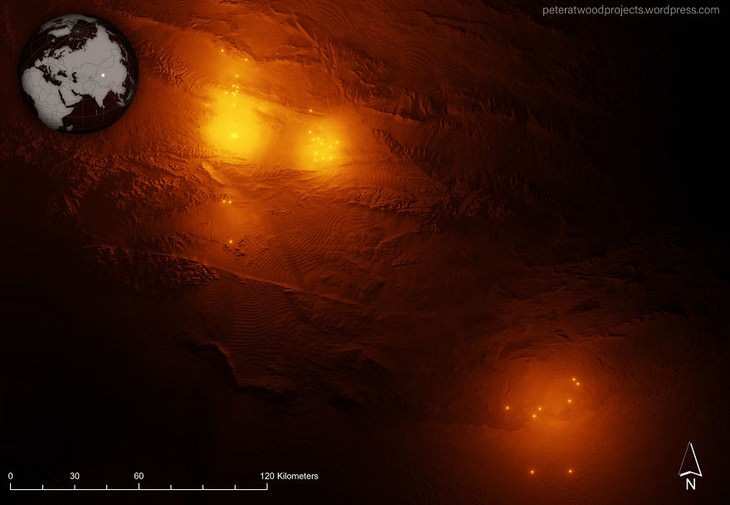
As for China, it carried out 45 tests in Northern China at the Lop Nur facility. These tests carried on between 1964 and 1996. About half of these tests were conducted underground, whereas the rest were atmospheric tests.
North Korea
Since the 1990’s, the majority of countries have seized to test nuclear weapons. One exception is North Korea: it conducted the first nuclear test in 2006, which was then followed up by 5 subsequent tests, all underground, at the Punggye-ri Nuclear Test Site. The last and simultaneously largest test was done in 2017.
The environmental and health effects of all these nuclear tests have affected the adjacent areas and local population adversely. We still don't understand how these explosions will affect the Earth and humans in the long term, but spikes of health issues, sudden deaths, and devastating environmental damage are already apparent around all of these testing sites.
If you'd like to see a different approach to visualizing the timeline of nuclear explosions, click the play button on the video below.

